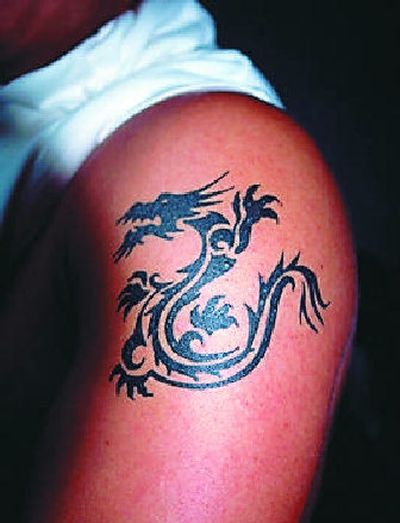Tattoo artists giveth, taketh away

For 10 years, tattoo artist Steve Huntsberry has worked at his shop in Charlotte, N.C., removing tattoos with a laser and coming face to face every day with his customers’ big mistakes. He has removed more tattoos than he can count, but there are some he’ll never forget.
Like the guy who had a pair of eyes tattooed on a private part of his body.
“He decided he didn’t want those any more,” says Huntsberry, 33. “I felt for him. I really did.”
Empathy for those who seek tattoo removal – and his own experience regretting bad tattoos – is what led Huntsberry to offer tattoo removal services within his own tattoo shop, named, ironically enough, Immortal Images.
“We all make bad decisions sometimes,” Huntsberry says, sheepishly admitting his first tattoo – a Grim Reaper he got on his left arm at age 15 – was also among the first to be removed. “I understand what it is like having a bad tattoo, having something you don’t want to look at every day.”
For years, dermatologists had been removing tattoos from customers using dermabrasion tools that essentially sanded off tattoos, or caustic salt solutions that burned the skin. But since 1986, they have used a tool called a q-switched laser that rarely leaves scars or damage but requires multiple, painful treatments that can end up costing thousands. Now, more and more tattoo artists like Huntsberry are offering the laser service themselves, generally at a lower cost, but setting off debate in the process.
Some dermatologists and medical groups say the work is safe only when done by a physician in a doctor’s office; tattoo artists argue they know how skin, tattoo pigments and lasers interact and can provide an environment where their tattooed customers feel comfortable.
Worth the pain
There are few national figures on annual tattoo removal, but a survey conducted in 2004 and reported in the Journal of the American Academy of Dermatology found 24 percent of Americans ages 18 to 50 had tattoos, and of those, 17 percent were considering having them removed.
Tattoo removal has been robust business for Huntsberry, who eliminates 20 to 30 tattoos each week. Immortal Images makes more money on removals than on the tattoo work of all four of its artists combined, Huntsberry says.
He says he strives to be honest with his customers about the procedure, which can result in second-degree burns with swelling, blistering and the possibility of infection.
Expensive process
Terry Welker, who owns five Eternal Tattoos shops outside Detroit, has offered tattoo removal at one shop for three years. He says his prices are $150 a session – removal usually requires at least three sessions – while doctors in the area charge $300-$500 a session.
David Goldberg, a dermatologist and lawyer in New York, says his practice charges $400 to $1,000 a session, and the procedure is almost never covered by insurance.
In February, Welker’s shop started laser removal of a tattoo on the arm of Mike Battaglia, 23. Although the pain was “absolutely horrible,” Battaglia says, he was pleased with the service.
“They’re around it every day,” he says. “They know what they’re doing with it.”
Although complications are rare, proper laser tattoo removal requires using the correct type of laser, understanding the reaction of tissue to laser and knowing how to treat the area after the procedure, says Roy Geronemus, a former president of the American Society for Dermatologic Surgery, in an e-mail.
“Clearly, tattoo artists are not qualified or trained to practice medicine,” Geronemus says. “Not a week goes by where I don’t see complications from tattoo removal by unqualified individuals.”